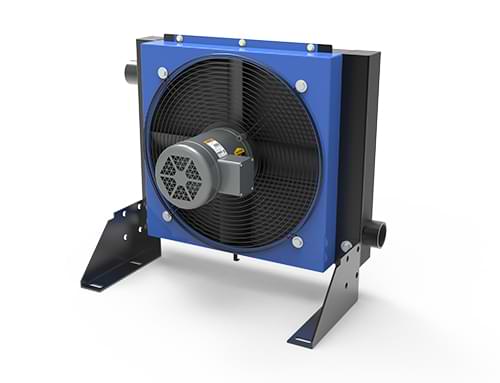Aftercoolers for the Pharmaceutical Industry
In an industry where precision and purity are non-negotiable, aftercoolers help manage the compressed air systems that power everything from manufacturing to packaging. Essentially, they cool down the hot, moist air coming out of compressors, preventing corrosion, contamination, and equipment breakdowns. For a field obsessed with meeting strict regulations—like FDA standards in the U.S. or GMP guidelines globally—that’s a big deal.
Applications
- Tablet Production: When you’re pressing powders into pills, compressed air often powers the machinery. An aftercooler ensures the air stays dry, so you don’t get clumping or contamination in the mix.
- Sterile Packaging: Think blister packs or vials. The air used to seal or move these items has to be pristine. Aftercoolers help strip out moisture that could harbor bacteria.
- Fermentation Processes: In biotech, where drugs like insulin are brewed, aftercoolers keep the air feeding fermenters free of excess humidity, protecting delicate microbial cultures.
Water Cooled Aftercoolers
Compressor Cooling
- Fixed or Removable Tube Bundles
- Material Options Available
- Standard and Custom Options

Air Cooled Aftercoolers
Compressor Cooling
- Use Ambient Air to Cool
- Variety of Motor Options
- Standard Pressures of Up To 250 psi

The Benefits of Aftercoolers for Pharma
So, how do they fit into the pharmaceutical world? Compressed air is everywhere in these facilities. It’s used to run pneumatic tools, move materials, and even keep cleanrooms at the right pressure. But if that air isn’t properly cooled and dried after compression, you’re risking water vapor or oil sneaking into the mix. That’s a nightmare when you’re making tablets or sterile injectables. Aftercoolers step in to chill the air, letting moisture condense out before it hits filters or dryers downstream. The result? Cleaner, safer air that won’t mess with your product.
Take a real-world example: a company like Pfizer, churning out millions of vaccine doses, relies on compressed air for filling vials. Without an aftercooler, you’d have soggy air gumming up the works—or worse, compromising sterility. Another case? A generics manufacturer I read about once had downtime slashed by 20% after upgrading their aftercooler setup. Less moisture meant fewer clogs in their drying lines.
At the end of the day, aftercoolers are unsung heroes in pharma. They’re not flashy, but they keep the air systems humming and the drugs safe. And in this industry, that’s what counts.


